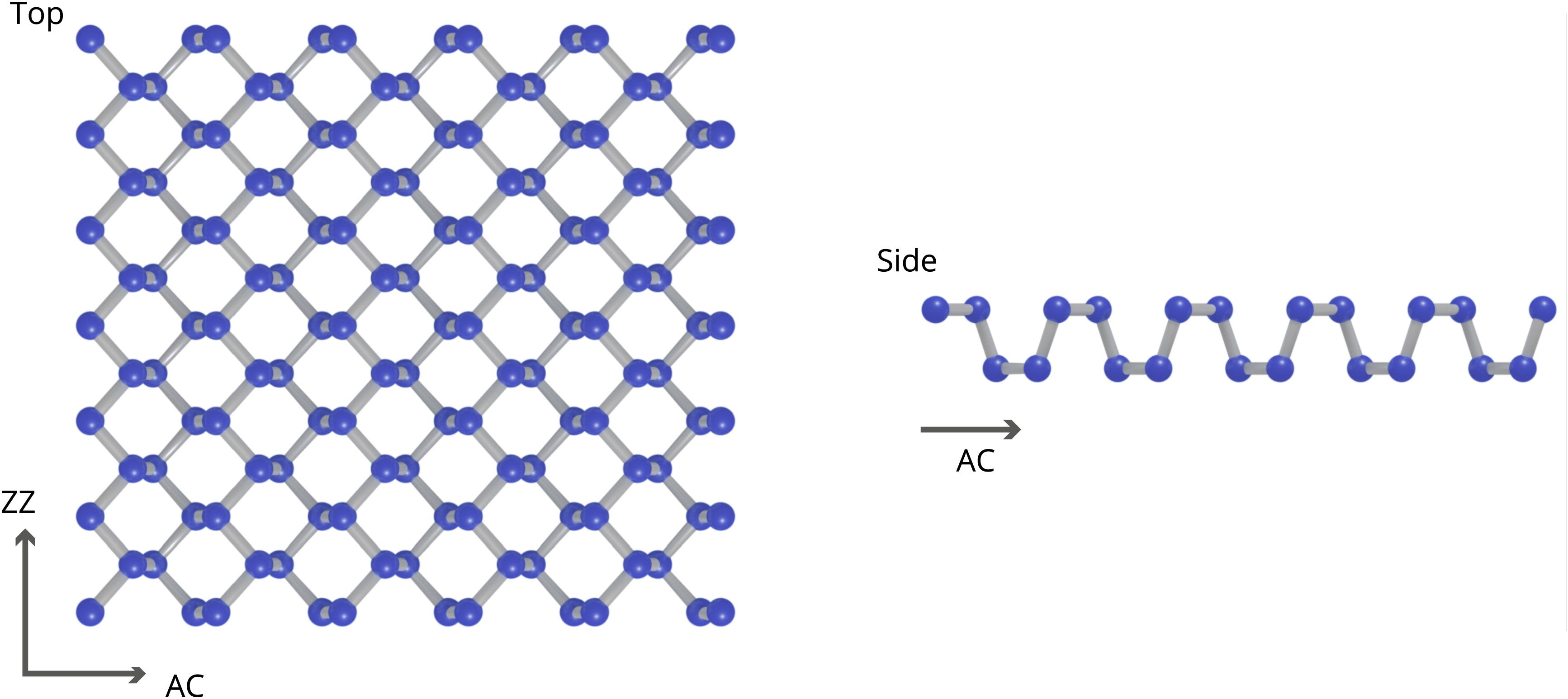Black Phosphorus Structure

Black phosphorus has gained attention for its distinct structural properties when reduced to 2D layers, known as phosphorene. By isolating individual layers from the bulk crystal using mechanical exfoliation or sonication techniques, researchers have unveiled a puckered honeycomb structure, which significantly influences its physical and electronic properties.
The properties of single crystals can also be explored using a range of microscopy techniques including atomic force microscopy (AFM) and transmission electron microscopy (TEM).
Phosphorene Structure
The 2D layers of phosphorene have atoms arranged in a puckered honeycomb structure. It is this structure which gives the material its fascinating properties.

The structure of black phosphorus arises from the electronic configuration of phosphorous (3s2 3p3). Here, sp3 hybridization allows phosphorus to form three bonds to adjacent atoms, leaving a lone pair of electrons. Unlike graphene and TMDCs, the sp3 bonding in black phosphorus results in layers with a puckered honeycomb structure. This structure causes the unusual properties of phosphorene which are not found in other 2D materials.
The puckered honeycomb structure of phosphorene means that charge carriers experience a very different topology depending on which direction they are traveling in the phosphorene plane. This results in a strong anisotropy in many of its properties, such as carrier mobility (and effective mass), thermal conductivity, and mechanical characteristics (including Young’s modulus).
Black Phosphorus

Learn More
 The Allotropes of Phosphorus
The Allotropes of Phosphorus
Depending on environmental conditions and how it is processed, elemental phosphorus can take several forms: white, red, black, and violet phosphorus.
Read more... How does Phosphorene Compare to Other 2D Materials?
How does Phosphorene Compare to Other 2D Materials?
Single-layer black phosphorus’ hole mobility compares favorably with Transition Metal Dichalcogenide Monolayers (TMDCs) but is orders of magnitude below that of graphene.
Read more...